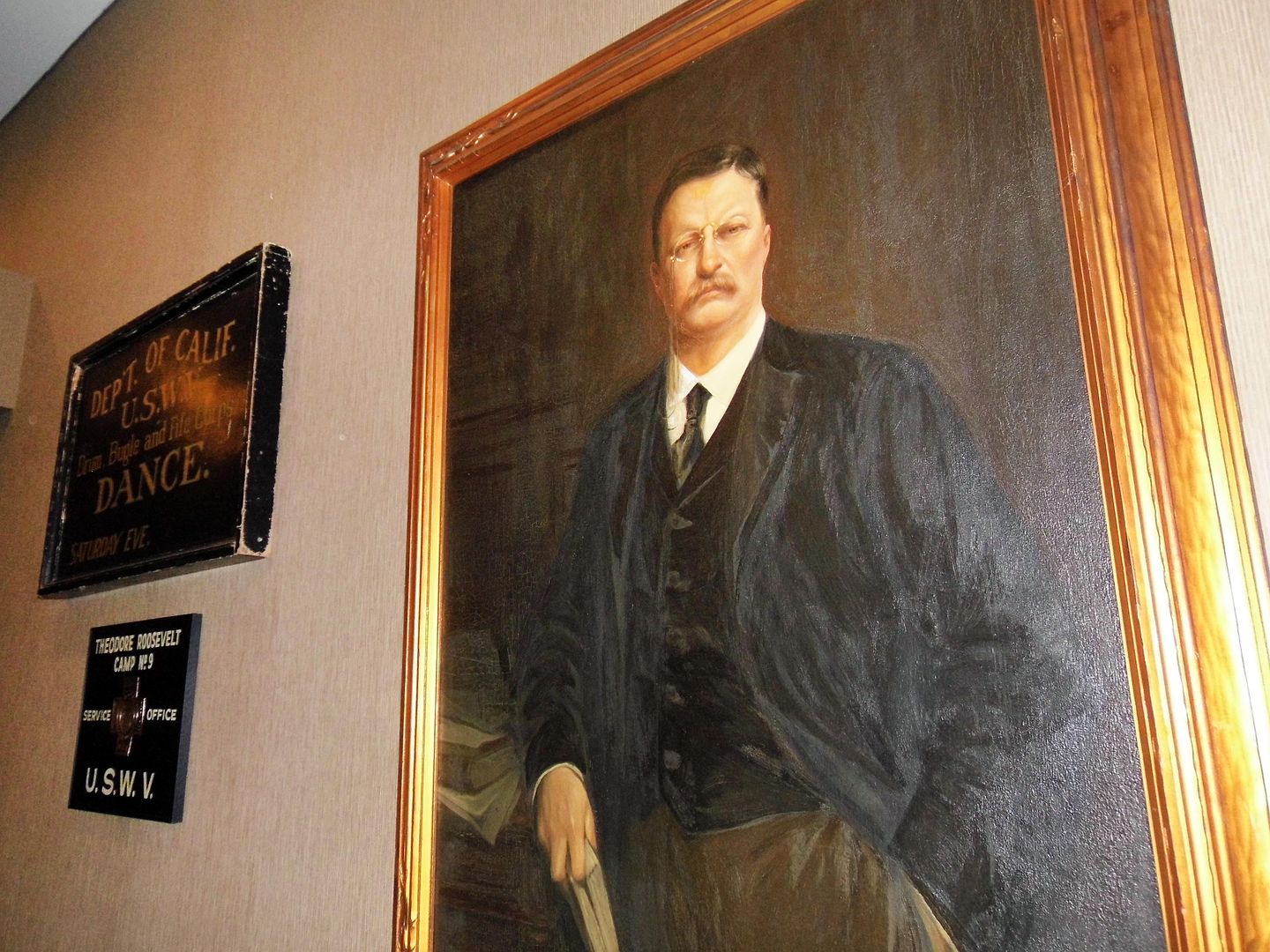After World War I, a number of veterans' organizations were formed—the American Legion, the VFW, and so on.
But there's one group that predates nearly all of them: the Grand Army of the Republic, formed in 1866, the year after the U.S. Civil War ended.
At its peak in 1890, it consisted of nearly a half-million members, at a time when the Civil War was being commemorated and monuments were being dedicated.
Of course, all of its members have died off.
But there's still a constant influx of veterans coming off duty and trying to make the transition from military to civilian life.
There are veterans' memorials all over Southern California, too—we even have Veteran Avenue here in LA, which runs along the east side of the Los Angeles National Cemetery.
But there's one place that's considered a "living memorial" to LA County veterans.
And that's Bob Hope Patriotic Hall in Los Angeles, part of the Military and Veterans Affairs division of the County of Los Angeles—and originally built specifically to support the Grand Army of the Republic.
A California state landmark, adorned with an exterior mural by Charles Freeman ("Spirit of '76"), it's also known simply as Patriotic Hall...
...but "patriotic halls" have been dedicated all over LA County since as early as 1913.
The first one to be built was on the 10th floor of the old Hall of Records building. There were two separate such halls by 1915—and the First World War didn't even end until 1918.
By 1926, all the veterans' organizations had outgrown every other patriotic hall in LA—so they all moved into this one on South Figueroa Street. At the time, it was the tallest building in the city of LA.
Designed by Allied Architects Association of Los Angeles (a partnership that included Donald and John Parkinson, and a firm also known for its work on the Hall of Justice in the LA Civic Center) in Italian Renaissance style, it was rededicated in 2004...
...and renamed in honor of Bob Hope (in the year after he died) for his work with the USO.
The hall was upgraded during a renovation between 2007 and 2013, after which it was rededicated once again—now LEED Gold-certified and ADA compliant.
The main lobby retains some architectural elements from the 1920s...
...including its arched ceiling, which was hand-stenciled in Gothic-Renaissance style...
...but it also features tryptic murals that were painted as part of the Works Progress Administration in 1942, including A.J. Leitner's "Soldiers and Sailors."
The other WPA-era murals in the lobby—those by Pasadena painter Helen Lundeburg circa 1941, which depicted the Preamble to the Constitution, the Freedom of Assembly, and the Freedom of the Ballot—were damaged in the early 1970s. At some point, they were removed and... well... lost.
They've been replaced by a tryptic of photorealistic painted murals—"We the People: Out of Many, One," by former U.S. Air Force illustrator Kent Twitchell, circa 2011.
In addition to an administrative office and library...
...the main floor also houses a 500-seat auditorium, with preserved architectural features...
...including coffered arches by the doorways.
The opening scene of Patton was shot in there; and the Los Angeles Municipal Court used it (as well as other rooms around town) during the 25 years it was without a courthouse after the Long Beach earthquake of 1933.

The upper floors of Patriotic Hall contain a variety of offices and meeting rooms and halls, including the Theodore Roosevelt Office Suite...
...the Masonic-style John Hancock Room, the Marine Room, the General Grant Room, and the Lincoln Room (some with church pew benches lining the walls, like in the old days).
Artifacts from all those vets organizations abound...
...whether photos, paintings, printed matter, personal effects...
...or uniform items from each of the five service branches throughout history.
There's even a mini museum devoted to the U.S. Navy, including a collection from the U.S.S. Los Angeles (BB-11).
The original "mess hall" has been preserved on the lower level...
...though it was converted into "The Purple Heart Inn" in 1976, when downstairs was also rededicated as the "Bicentennial Level."
At the Veterans Service Center at Patriotic Hall, today's vets can get support services related to housing, counseling, legal issues, and job searches.
Unfortunately, Bob Hope Patriotic Hall isn't generally open to the civilian public—though veterans and members of their immediate families are welcome.
I managed to get in on a tour arranged by LAVA: Los Angeles Visionaries Association. I've heard stories of people being turned away when they've just shown up.
But next time you see it from the 10 freeway or while driving around USC, you'll know what it is!
Related Posts:
Photo Essay: Amongst the Abandoned at the Veterans Administration, LA
Photo Essay: Masonic Hall NYC (Open House NY)

No comments:
Post a Comment